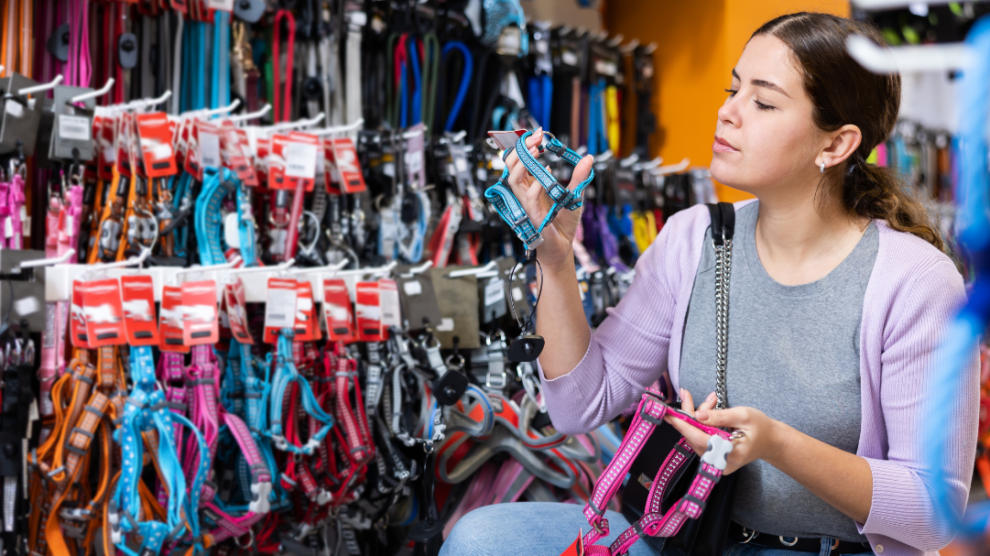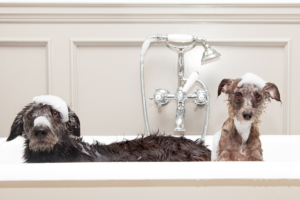Understanding and Choosing the Right Dog Harness
A no pull dog harness is a specially designed harness that discourages dogs from pulling on the leash during walks. This type of harness can be a game-changer for pet owners who struggle with dogs that tend to lunge, tug, or pull, making walks stressful and difficult. Unlike traditional collars, a no-pull harness provides better control, reduces strain on the dog’s neck, and helps promote a safer, more enjoyable walking experience. In this guide, we’ll explain what a no-pull dog harness is, how it works, its benefits, and tips for choosing the best one for your dog.
What is a No Pull Dog Harness?
A no-pull dog harness is designed to prevent dogs from pulling by distributing pressure across the chest and shoulders rather than on the neck. It typically features one or two leash attachment points, including a front clip on the chest and sometimes a back clip on the top of the harness. The front-clip design is what makes it “no pull”—when the dog pulls forward, the harness gently redirects their movement to the side, discouraging them from pulling harder.
How Does a No Pull Dog Harness Work?
The effectiveness of a no-pull harness comes from the placement of the leash attachment on the front of the chest. Here’s how it works:
- Redirection of Movement: When a dog pulls on a leash attached to a front clip, the harness turns their body to the side instead of allowing them to move forward. This redirection naturally discourages pulling because it makes it harder for the dog to continue in the desired direction.
- Pressure Distribution: Unlike collars that concentrate pressure around the neck, a no-pull harness distributes the pressure across the chest and shoulders. This helps prevent choking, especially for dogs with respiratory issues or those prone to tracheal injuries.
- Encourages Better Walking Behavior: The design of the harness encourages dogs to stay closer to their owners and reduces the instinct to pull. With consistent use and reinforcement, many dogs learn to walk calmly without pulling.
Benefits of Using a No Pull Dog Harness
No-pull harnesses offer numerous advantages for both dogs and owners. Here are some key benefits:
1. Improved Control
A no-pull harness gives you more control over your dog’s movements, especially if they are large or strong. With the front-clip design, it becomes easier to guide your dog, even if they’re prone to sudden lunges or unexpected changes in direction.
2. Reduced Strain and Pressure on the Neck
Traditional collars put pressure on a dog’s neck, which can cause discomfort and, in severe cases, injury. No-pull harnesses eliminate this pressure by shifting it to the chest and shoulders, which are better suited to handle it. This is particularly beneficial for dogs with respiratory issues, brachycephalic breeds (such as Bulldogs and Pugs), or dogs that tend to cough or gag with collars.
3. Encourages Positive Behavior
By redirecting your dog’s movement and making pulling less rewarding, a no-pull harness helps encourage calm walking behavior. This makes walks more enjoyable for both you and your dog and can help reduce stress or frustration during outings.
4. Safer for Training and Socialization
If you’re working on training with your dog, a no-pull harness can be a valuable tool. It provides better control, which is helpful when introducing your dog to new environments, other animals, or unfamiliar people. The added control also makes it easier to manage behavior and reinforce good habits.
Types of No Pull Dog Harnesses
There are different types of no-pull harnesses to consider, each with unique features and benefits:
1. Front-Clip Harness
This is the most common type of no-pull harness, featuring a leash attachment on the chest area. When your dog pulls, the harness redirects them to the side, reducing their forward momentum. Front-clip harnesses are highly effective for training and general walking purposes.
2. Dual-Clip Harness
Dual-clip harnesses offer both a front and back leash attachment. The back clip can be used for regular walks or when pulling isn’t an issue, while the front clip is ideal for training or for dogs that tend to pull. Dual-clip harnesses provide flexibility, allowing you to adjust based on your dog’s behavior and training needs.
3. Vest-Style Harness
Vest-style no-pull harnesses are padded and cover more of the chest and back, making them ideal for small or sensitive dogs. These harnesses offer a comfortable fit and distribute pressure evenly, which is gentle on the dog’s body. However, they may not be as effective for larger, stronger dogs that pull with force.
How to Choose the Right No Pull Dog Harness
Choosing the right no-pull harness is essential for ensuring comfort, safety, and effectiveness. Here are some factors to consider:
1. Size and Fit
Measure your dog’s chest and neck to find the correct harness size, as a poor fit can make the harness uncomfortable or ineffective. Look for harnesses with adjustable straps, so you can customize the fit for your dog’s body shape.
2. Material and Durability
Choose a harness made from durable materials, especially if you have a strong or active dog. Nylon, neoprene, and padded materials are popular choices for comfort and durability. Reflective stitching or colors can also enhance visibility, especially if you walk your dog at dawn, dusk, or at night.
3. Leash Attachment Points
Consider whether you need a front-clip only or a dual-clip harness, depending on your dog’s walking behavior and training needs. Dual-clip harnesses offer more flexibility, while front-clip harnesses are generally better for discouraging pulling.
4. Ease of Use
Some harnesses are easier to put on than others. Look for designs that are easy to slip on and secure, especially if your dog tends to be wiggly or nervous about wearing a harness.
Tips for Using a No Pull Dog Harness
To get the most out of your no-pull harness, follow these tips:
- Introduce the Harness Gradually: Allow your dog to sniff and get used to the harness before putting it on. Offer treats and praise to create a positive association.
- Start with Short Walks: Begin with shorter walks to help your dog get used to the feeling of the harness and the redirection when they pull.
- Use Positive Reinforcement: Reward your dog for walking calmly by your side with treats and praise. This reinforces the behavior you want to encourage.
- Be Consistent: Consistency is key when training with a no-pull harness. Use it regularly to reinforce the no-pull behavior.
Woof. Woof.
A no-pull dog harness can be an excellent tool for pet owners struggling with leash-pulling behavior. By offering control without causing discomfort, it allows for a more enjoyable walking experience for both you and your dog. Remember to choose a harness that fits well, is made from durable materials, and suits your dog’s specific needs. With patience, consistency, and positive reinforcement, a no-pull harness can transform your dog’s walking behavior and make every outing more pleasant.



























